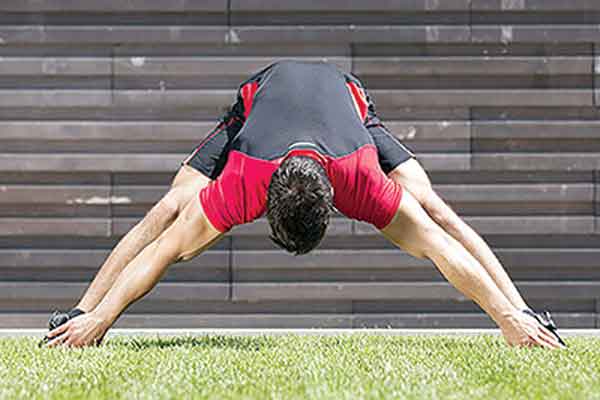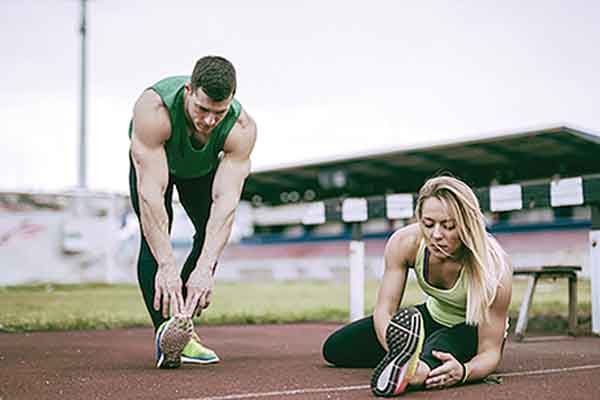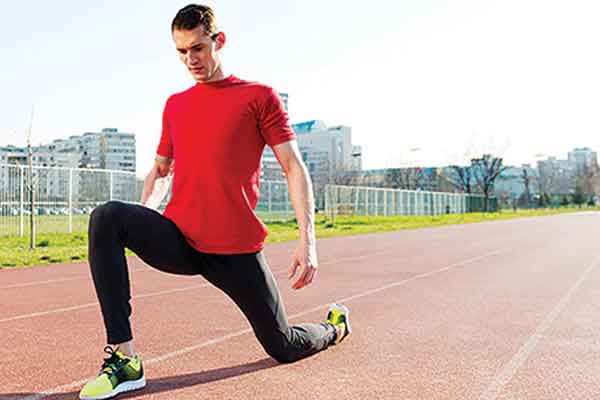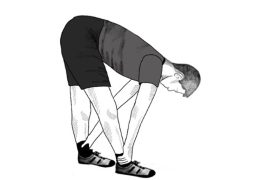Whether you play sports for competition or fitness, you don’t want to be sidelined with an injury. Time away from the game or in forced inactivity is something we all want to avoid. While it is impossible to prevent every injury, the American Academy of Orthopaedic Surgeons says research suggests that injury rates could be reduced by 25% if athletes took appropriate preventative action. Use these general rules for injury prevention no matter what sport you play.By following these top tips for avoiding sports injuries such as warming up and cooling down correctly, you’ll be able to spend more time as a sports participant and less as an injured onlooker.
Warm-Up
Why warm-up?
Prepare your body (and mind) for your main exercise session by:
- Gradually raising the heart rate.
- Warming the muscles and connective tissues.
- Improving mobility.
- Improving the functionality of all the body’s movements.
The end result is that you will be far less likely to suffer a muscle or tendon strain because your muscles will be warm, loose, pliable and ready for your workout.
How should you warm-up?
Using the same equipment or activity to that of your main session, exercise at a low intensity for approximately 10 minutes, gradually increasing your pace and speed to a level that is close to the target pace of your main session. For example, before a rowing session a warm-up on the rowing machine is ideal, because you are targeting the same muscle groups and executing the same movements.

Cool-down
Why cool-down?
A spell of 10 minutes spent cooling down — which is basically the opposite of warming up — will flush out the waste by-products from your session and safely return your heart rate, blood pressure and breathing to your pre-exercise levels. It is common to neglect a cool-down in favour of dashing to the shower; however, it is a key tool in helping limit any post-exercise soreness.
How should you cool-down?
Carry out some light cardiovascular exercise at a very low intensity for 10 minutes, followed by some stretching. For example, if you’ve been running, then jog or walk; if you’ve been swimming hard, then use a stroke such as backstroke or breaststroke for a few relaxed lengths.
Stretching
Why stretch?
Maintaining or developing it is extremely important for injury prevention because poor flexibility is the one of the primary causes of muscle and tendon strains. Reduced flexibility equals short, tight muscles — which are then highly susceptible to damage during dynamic sporting activities.
How should you stretch?
After your cool-down, focus on stretching the main muscle groups that you have used for your activity. For example, you should focus on leg stretches after running, whereas after an upper body workout in the gym you should focus on chest, shoulder, back and arm stretches.
Focus on technique
Why should you focus on technique?
Incorrect technique for any sporting activity is likely to result in injury. Resistance training sports injuries are the most common, and are usually caused by an overzealous approach in an attempt to lift heavier weights. By focusing on correct technique, you will avoid injury, perform more efficiently and get greater gains from your sessions.
How can you get technique right?
Seek guidance from a reputable exercise professional or sporting coach, who will be able to advise you and provide expert guidance so that you learn the correct training protocols at the outset. Time spent at this stage will reap longterm rewards in the form of improved performance and no training downtime due to sports injuries.

Get the correct sports gear
Modern technology has made significant advances in injury prevention, particularly for footwear. You can now get exercise footwear that is designed specifically for the demands of your chosen sport, with different models tailored for your particular gait, so that your likelihood of injury is significantly reduced.
Rest up between training
Why you should rest after training?
The most undervalued component of a training programme, rest is essential to allow your body to recover from the demands of your activity and repair microscopic damage to the muscles and associated tissues that occur during exercise.
How often should you rest after training?
Include at least one total rest day in your training schedule each week — and rest doesn’t mean doing an alternative sport to your main activity! Also, after an event or race, take a few days off to recover, because the demands of competition on your body are greater than training — so you will need more recovery time.

Total training is best
Why is total training best?
The primary elements of a balanced health and fitness programme are:
- Resistance training.
- Cardiovascular (CV) training.
- Core training.
- Flexibility.
- Coordination.
- Nutrition.
Neglect any one of these elements and your training program will be unbalanced — which will increase the likelihood of you getting an injury, illness, or both.
How do you total train?
Devote time to the disciplines that are missing from your program. For example:
- Runners should also stretch and train with weights.
- Weight trainers should include CV in their program.
- Yoga specialists should do both CV and resistance training sessions.
Importance of good nutrition
Why is good nutrition important?
A good nutrition plan is at the foundation of an effective exercise program, because you have to put back into your body what you take out. The demands of sport and exercise on the body mean that your nutrition requirements are greater than that of a sedentary person — and if nutrition is neglected, your body will be unable to recover properly from training, which will lead to illness or injury.
How do you ensure you get good nutrition?
Putting focus into your food intake is as valuable as your training, so:
- Eat regular, small meals to fuel your sport and replace energy fast.
- Don’t neglect protein because it is essential for growth and repair — and as an active sports or fitness person, you will need more than someone who is less active.
- Prevent energy ‘lows’ by avoiding long gaps between meals or snacks.
- Focus on ‘clean eating’ by following an unprocessed diet as much as possible.
Heat related illnesses is a real concern for athletes, especially during hot and humid days. Parents should make sure their children have adequate water before, during and after play, and watch for any signs of a heat-related illness, including fatigue, nausea, vomiting, confusion or fainting. EMPHASIZE ON HYDRATION !!!!!!

See a sports therapist
Why should you use sports therapy?
Sport and exercise can cause damage to muscles, tendons and the body’s other tissues. A good sports therapist is worth their weight in gold because by using skilled massage techniques they can restore the body to its pre-exercise condition. Additionally, they are goldmines of information and can assess, diagnose and treat a huge range of physical problems before injury strikes.
Prevention is better (and easier) than cure — and time spent on the couch will translate into more time on court, on the pitch or doing the activity that you enjoy.
Final word about injury prevention …
No-one likes to be struck down by injury or illness — and least of all a sports person who has trained long and hard to achieve their goals. None of the injury prevention tips are difficult to achieve or make deep inroads into your valuable time or break the bank — but they will all help you to reap long-term dividends by enabling you to continue doing what you enjoy week in, week out. Train hard but train sensibly.
Disclaimer:
The information contained in this article is for educational and informational purposes only and is not intended as a health advice. We would ask you to consult a qualified professional or medical expert to gain additional knowledge before you choose to consume any product or perform any exercise.






